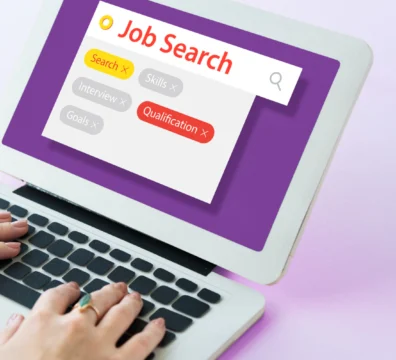In today’s fast-paced work environment, working towards prevent employee burnout is more crucial than ever. Burnout affects not only individual well-being but also overall workplace productivity and morale.
This guide will delve into essential strategies to create a healthier workplace, focusing on recognising the signs of burnout and implementing effective prevention measures. We’ll provide practical tips and insights, whether you’re leading a team, part of HR, or keen on maintaining your work-life balance.
So, join us as we explore how to foster a supportive environment that keeps burnout at bay and nurtures a positive, thriving work culture.
Understanding the Basics of How to Prevent Employee Burnout
Understanding what and why it occurs is at the core of preventing employee burnout. Burnout is more than just feeling tired; it’s a state of emotional, physical, and mental exhaustion caused by excessive and prolonged stress.
So, it often arises when an employee feels overwhelmed, emotionally drained, and unable to meet constant demands.
Key factors leading to burnout include:
- Unmanageable workloads.
- Unclear job expectations.
- Lack of control over work.
- Insufficient recognition.
- Poor work-life balance.
So, it’s not just the amount of work but also the feeling of being undervalued or unsupported that contributes to burnout.
Therefore, recognising the signs of burnout is essential to prevent employee burnout. These include:
- Reduced efficiency and energy
- Lowered motivation, increased errors
- A cynical attitude towards the job and colleagues
Understanding burnout is the first step towards prevention. Reducing employee burnout requires a proactive approach, not just from the individual employee but also from the organisation. So, by identifying and addressing the root causes, it’s possible to create a healthier work environment to prevent employee burnout.
Reducing Burnout in the Workplace: Key Initiatives
Tackling employee burnout requires concerted efforts at various levels within the organisation. But here are key initiatives to reduce burnout in the workplace:
Promote Work-Life Balance
To prevent employee burnout, encourage employees to maintain a healthy balance between their professional and personal lives. This can be achieved through
- Flexible work schedules
- Promoting remote work options
- Respecting boundaries between work and personal time
Establish Clear Job Expectations
Ensure that all employees understand their jobs and responsibilities. Clear communication about job expectations can prevent confusion and the stress of uncertainty.
Create a Supportive Work Environment
Foster an environment where employees feel supported and respected. This may be accomplished using the strategies listed below:
- Regular recognition of achievements
- Constructive feedback
- Supportive and open-door attitude from management
Offer Professional Development Opportunities
Provide opportunities for employees to develop their skills and grow professionally. This improves their competency, enhances job satisfaction, and helps prevent employee burnout.
Encourage Regular Breaks and Time Off
Make sure employees take regular breaks during work and utilise their vacation time. Stepping away from work duties is crucial for mental and physical rejuvenation.
Provide Access to Mental Health Resources
As per a report published by WHO (the World Health Organisation), 15% of working adults suffer from mental health issues like depression, anxiety, and stress. Depression and anxiety cause people to miss about 12 billion work days each year, which costs the world $1 trillion a year in lost output.
To prevent this, workplaces can offer resources such as
- Counselling services,
- Stress management workshops,
- Wellness programs
Improve Workplace Communication
Promote open and honest communication within the team. Encourage employees to voice their concerns and suggestions and ensure they feel heard.
Monitor Workloads
Regularly assess employees’ workloads to ensure they are manageable. Overloading employees can lead to stress and eventual burnout.
By implementing these burnout prevention strategies, organisations can create a more positive work environment, reduce stress, and prevent employee burnout.
Employee Burnout Prevention: A Manager’s Role
Managers play a critical role in reducing employee burnout. Their actions and leadership style can significantly impact the well-being of their team members. Here’s how managers can help:
- Lead with Empathy: Understand the individual challenges and needs of team members. Showing empathy and offering support can alleviate stress and prevent burnout.
- Encourage Team Collaboration: Promote a collaborative team environment with shared tasks and responsibilities. This can help prevent overburdening a single employee.
- Provide Constructive Feedback: Regular, constructive feedback helps employees understand their progress and areas for improvement, reducing uncertainty and stress.
- Model Healthy Work Habits: Set an example by maintaining healthy work habits. This includes taking breaks, managing time effectively, and demonstrating work-life balance.
- Recognise and Reward Efforts: Acknowledge your team’s hard work and achievements. Recognition can be a powerful motivator and morale booster.
- Develop Effective Communication Skills: Good communication helps understand team dynamics and address issues before they escalate to burnout.
- Facilitate Professional Growth: Help employees set career goals and provide development opportunities. This can increase job satisfaction and engagement, reducing the risk of burnout.
- Monitor and Adjust Workloads: Keep an eye on the workloads of your team members and adjust them as needed to prevent overwork.
Practical Ways to Prevent Employee Burnout
Preventing employee burnout involves practical steps that can be integrated into daily work life. So, here are some effective methods:
- Encourage Regular Breaks: Promote taking short, regular breaks throughout the day. Stepping away from the desk can refresh the mind and reduce stress.
- Foster a Positive Work Culture: Cultivate a work environment where positivity is encouraged. Celebrate small wins and maintain a supportive atmosphere.
- Implement Flexible Work Policies: Offer flexible working hours or remote work options. This can help employees manage work and personal responsibilities more effectively.
- Encourage Physical Activity: Promote a healthy lifestyle, including regular exercise, which can relieve stress. Consider offering gym memberships or organising team sports events.
- Provide Mental Health Support: Make resources like counselling services or mindfulness sessions available to employees. Mental health is crucial in preventing burnout.
- Offer Time Management Training: Help employees learn how to manage their time effectively to avoid feeling overwhelmed by workloads.
- Create Open Communication Channels: Ensure employees can voice their concerns and feel heard. Regular team meetings or one-on-one check-ins can be effective.
- Encourage Vacation Time: Urge employees to use their vacation days to recharge. Time away from work is essential for mental health.
- Provide Training on Stress Management: Equip employees with tools and techniques to handle stress healthily.
- Set Realistic Expectations and Goals: Ensure work expectations and goals are achievable and clear to avoid undue stress and pressure.
Knowing how to help employees with burnout is crucial, and this list can help. So, by implementing these practical approaches, organisations can help prevent burnout, creating a more engaged and sustainable working environment.
How 6 Pence Helps
So, while any organisation must prevent employee burnout, it’s just a part of the broader challenge of managing staffing and recruitment effectively. This is where 6 Pence steps in as a vital partner for businesses. We understand that finding the right balance in the workplace isn’t always easy, and that’s why we’re here to help.
At 6 Pence, we offer a suite of services designed to alleviate the complexities of staffing and recruitment. From Staff Outsourcing to Payroll Outsourcing, PRO Services, Recruitment, and Promoters Management, our solutions are tailored to meet the unique needs of your business.
We operate across diverse locations, including Dubai, Iraq, Oman, and Bahrain. So, if you’re looking to ease staffing and recruitment challenges and foster a healthier workplace, contact us at 6 Pence. Let us help you build a more productive, engaged, and balanced team.
Frequently Asked Questions
What is employee burnout?
Employee burnout is a state of physical, emotional, and mental exhaustion caused by excessive and prolonged stress at work. It often results in feelings of overwhelm, reduced professional efficacy, and a lack of engagement.
How would you help prevent employee burnout?
To help prevent employee burnout, encourage work-life balance, set realistic job expectations, and create a supportive work environment. It’s also important to recognise and address early signs of burnout, such as chronic stress or declining job performance.
What are 3 ways to avoid burnout?
Three ways to avoid burnout include:
- Taking regular breaks during work to relax and recharge.
- Setting clear and achievable work goals to avoid feeling overwhelmed.
- Practising stress management techniques, such as mindfulness or exercise, to maintain a healthy work-life balance.




































































































